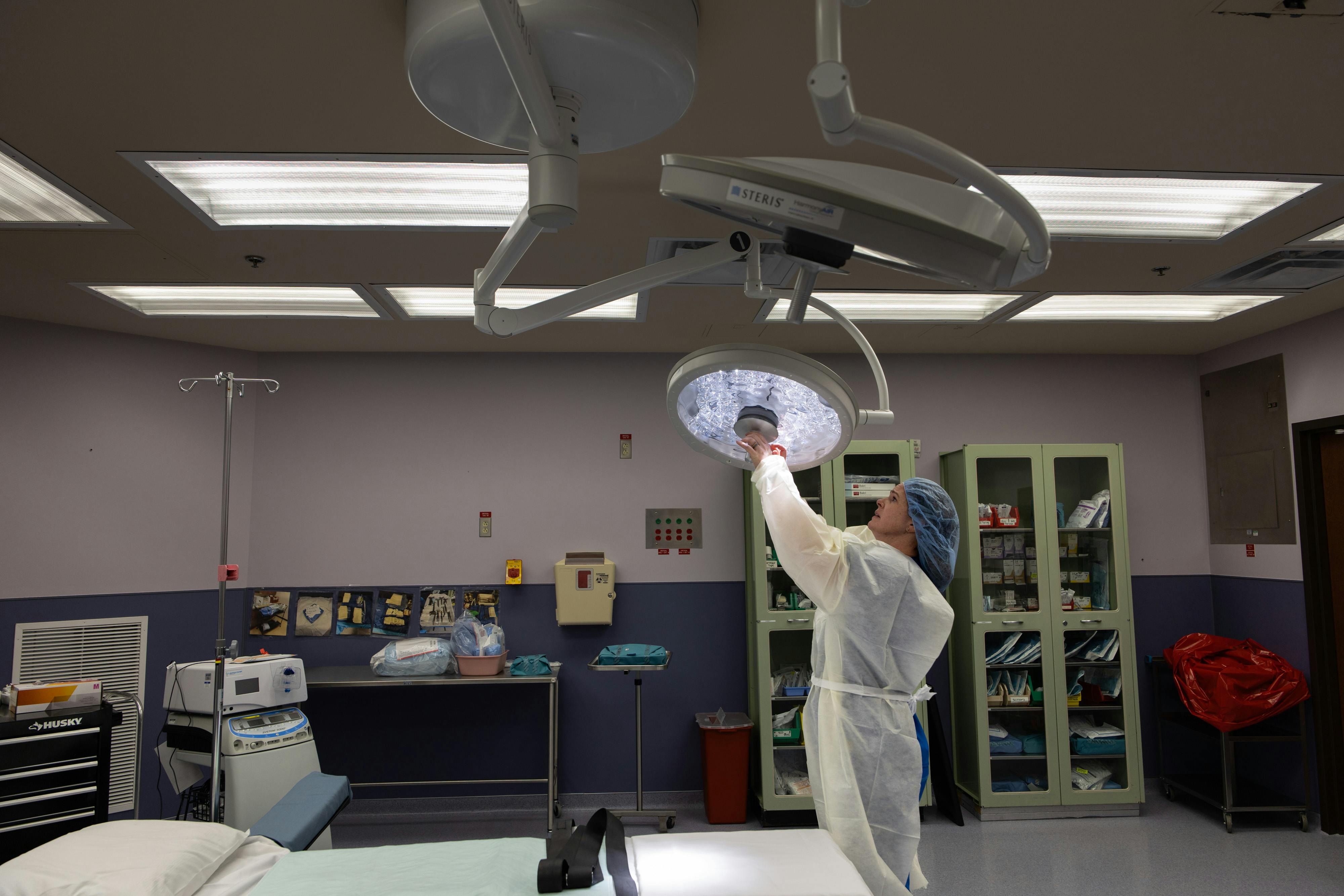The Republicans’ Medicaid Cuts Could Cause A Rural Unemployment Crisis

Rural hospitals are in crisis. “More than 700 rural hospitals—one-third of all rural hospitals in the country—are at risk of closing because of the serious financial problems they are experiencing,” according to an April report from the Center for Healthcare Quality and Payment Reform. “Over 300 of these rural hospitals are at immediate risk of closing because of the severity of their financial problems.”
And this doesn’t even account for what might happen if Republicans in Congress pass a budget bill that would cut $880 billion from Medicaid to cover tax cuts to the rich. Those cuts not only threaten health care coverage for millions of vulnerable Americans but also would endanger many rural hospitals, which are more likely than urban hospitals to rely on government health care spending to stay in business. Severe cuts to Medicaid could force many struggling rural hospitals to close, further diminishing work opportunities in areas where good, steady jobs are already scarce.
Rural hospitals are of course critical for patient care—often there’s only one serving a geographically broad swath of territory—but they’re also a major employer in their communities. They employ hundreds or even thousands of people, including nurses, administrative aids, filing clerks, nurses, nursing assistants, and doctors. If Medicaid cuts force rural hospitals to close, as experts suspect they could, rural America could face an unemployment crisis.
Nationwide, hospitals employ about 4 percent of the U.S. workforce, making them America’s sixth-largest employer. It’s harder to tease out exactly how much of the rural workforce they employ, but by some estimates the health care sector accounts for about 14 percent of employment in those areas; there are many rural counties where hospitals are the largest or second-largest employer. (The stereotype of the rural American farmer is a bit outdated, as most agricultural work disappeared decades ago. By 2016, the biggest employment sectors for rural counties were educational services, health care, and social assistance.)
More than a third of hospitals in the U.S. are classified as rural, and they’re more likely to be operating in the red than their urban counterparts. The reasons are tied to the fortunes of rural communities more generally. The hospitals serve smaller populations and so have fewer patients. On top of that, many rural counties are shrinking in population, and the people who remain tend to be older and poorer than the country as a whole. These smaller hospitals have less power than bigger chains when negotiating reimbursement rates with insurance companies, making the government’s health care programs a more important component of their funding. They’re also serving populations that are more likely to be in poor health, and at the same time facing shortages of primary care physicians.
Those problems led 136 rural hospitals, or about 3 percent, to close between 2010 and 2021. Almost three-fourths of those were in states that hadn’t expanded Medicaid through the Affordable Care Act, or had expanded it only within the previous year, hinting at how big a role the program plays in keeping those hospitals open. Not all rural hospitals are in crisis, though: Those in states that did expand Medicaid under the ACA are doing better. (However, the Center for Healthcare Quality and Payment Reform study found that 190 of the rural hospitals facing risk of immediate closure are in states that expanded Medicaid.)
If the past is any indication, the magnitude of the proposed new cuts could severely impact states and the hospitals that rely on those programs. “It’s kind of hard to specifically say that there’s a specific policy with a discrete and direct impact on hospital employment,” Zachary Levison, project director of the KFF Project on Hospital Costs, said. “But I think given the magnitude of the cuts to Medicaid that are being considered, these are likely to have an impact on hospital finances, and could especially hit rural hospitals, given the financial challenges that those facilities tend to have.”
Jobs in health care have been growing and are pathways into well-paying careers, and educators often promote the field to rural students to help address staffing shortages in rural areas. As employers, hospitals and medical offices are home to the pink-collar jobs of the new working class. In rural areas, they provide coveted desk jobs that don’t require standing all day or lifting heavy equipment—unlike many other jobs available to non-college graduates in these areas, in industries such as retail, manufacturing, construction, and farming.
Cutting Medicaid is just one of the many ways the Trump administration seems poised to betray the rural voters who have overwhelmingly supported him throughout his political career. From food assistance to disability programs, rural areas are much more likely to rely on government spending to keep people afloat, and that spending has knock-on effects throughout local economies. Medicaid spending is one of them, keeping health care available to rural patients while also supporting the local industries that supply that care. If that spending dries up, so may a lot of good jobs in places where they‘re hard to come by.


